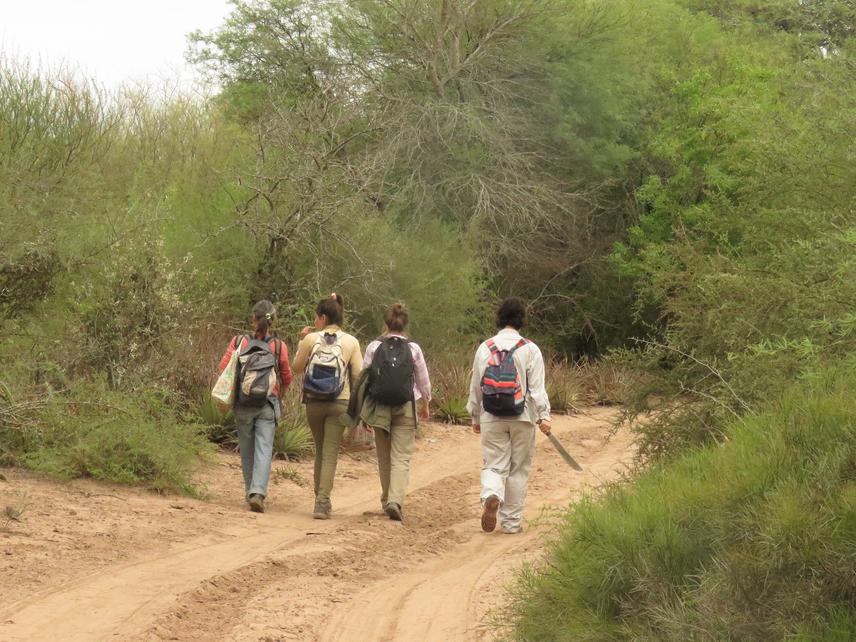Andrea Mariel Neme
This project will be developed in the Chaco Dry, a region rich in biodiversity with several species that are endemic, evolutionarily unique and/or that play important ecosystem roles. The region is also culturally rich, inhabited by Indigenous and Peasant people that live in isolated houses or communities in the forests, have subsistence economies, hold a close relationship with their natural environment and unique ecological knowledge. Currently, natural ecosystems are being replaced by industrial agriculture for commodity production. Habitat loss seems to be causing the disappearance of most wildlife species. This, in turn, threatens the food-security of Indigenous and Peasant people, that practice subsistence hunting and gathering and who´s nutrition depends on wild-meat. Large terrestrial mammals are important protein reservoirs and are among the most threatened species in this region.

Study area. © Oscar Quiroga.
This project contributes to improve conservation opportunities of wildlife and food-security of local communities. The project has three objectives:
1) Detect species of endemic, threatened and nutritional value mammals for the local population, map their distribution and address their habitat requirements.
2) Carry out diet monitoring with peasant and indigenous communities.
3) Prepare participatory maps with peasant and indigenous communities to identify hunting sites.
To the first objective, we will carry out semi-structured interviews with peasants and indigenous people to determine which species are present and which are consumed, and the areas where these species are found. Then, we will use occupancy models to address the habitat selection of species that are endangered, endemic or have nutritional value. We will create maps showing the distribution of these species and represent these areas as conservation priorities.
For the second objective, we will design the registration forms together with the peasant and indigenous communities where will registration the species consumed and the frequency of consumption of each species. We will analyse the results through frequency analysis.
Finally, the families that will participate in the diet monitoring will draw schematic maps where they will indicate the location of the "hunting sites". Then, using occupancy methodology we will make habitat maps and address the habitats in which the species consumed by the families are found.
These participatory methodologies will allow us to deepen our knowledge about the perception and the relationship that the local population has with nature. By working with local communities and in their territories, and by sharing our results with other stakeholders, we will results use for conservation and sustainable use purposes.
Header: © Facundo Lazarte.